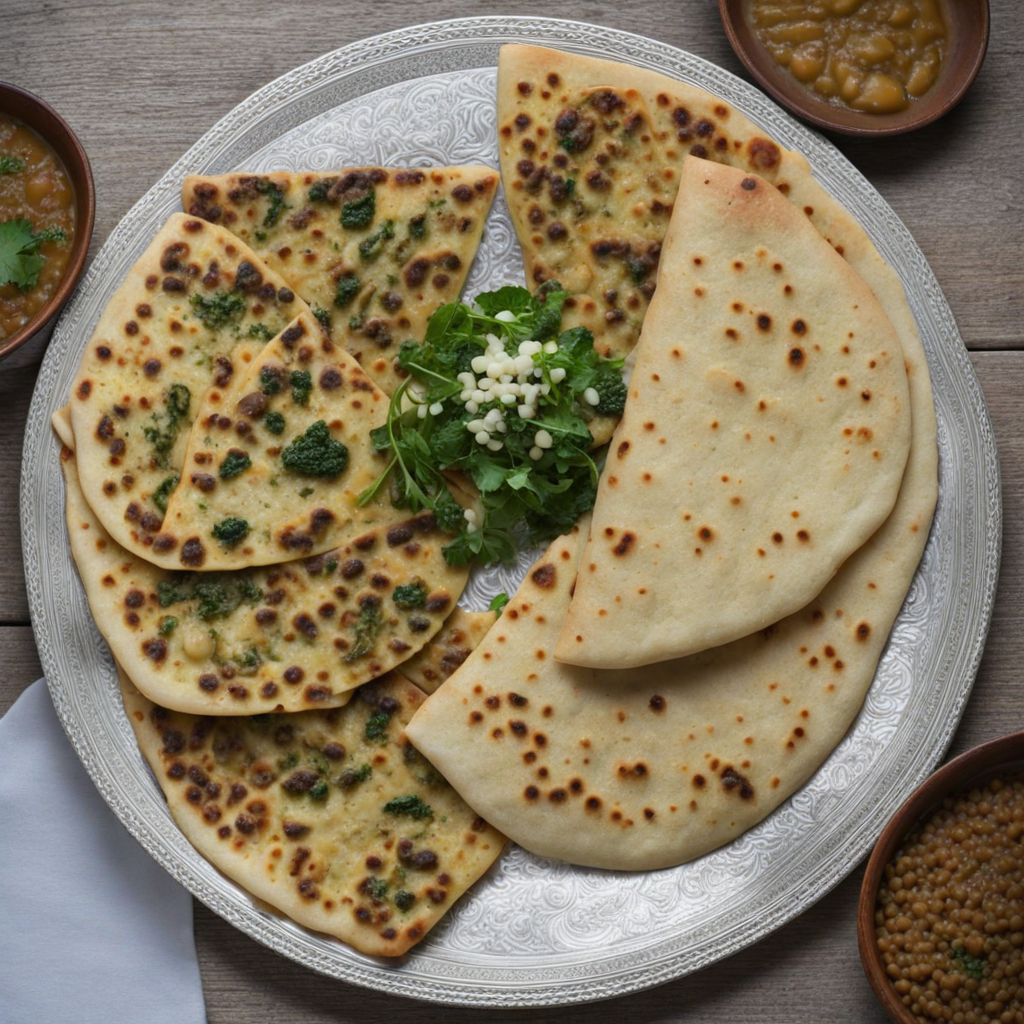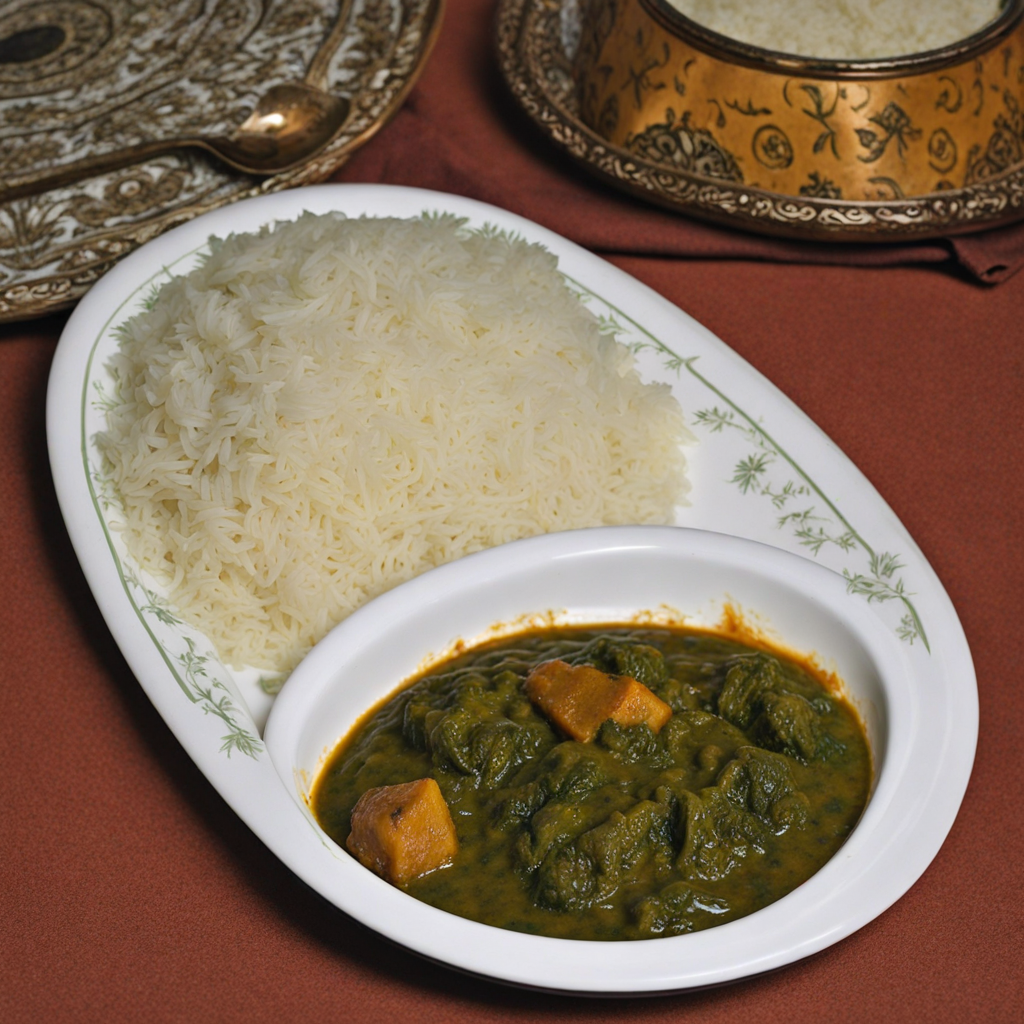Firni
Firni, a beloved Afghan dessert, is a velvety rice pudding that embodies the rich culinary traditions of Afghanistan. Historically, firni has roots that span centuries, drawing influences from Persian and Indian cuisines. It is often served during special occasions, including weddings, religious festivals, and family gatherings, symbolizing hospitality and celebration. The dish is not only a staple in Afghan households but also reflects the country’s cultural heritage, where culinary practices are passed down through generations. The flavor profile of firni is a harmonious blend of sweetness and subtle spices. The base of the pudding is enriched with cardamom, which adds a fragrant warmth, while rosewater imparts a delicate floral note. The sugar used in the preparation enhances the overall sweetness, balanced by the creamy texture that comes from the milk. Firni is typically garnished with slivers of pistachios or almonds, providing a delightful crunch and a pop of color that elevates its visual appeal. The combination of these flavors results in a comforting dessert that is both indulgent and refreshing. Preparation of firni is a meticulous process that requires attention and patience. It begins with soaking rice – typically basmati – in water for a few hours to soften it. After draining, the rice is ground into a fine paste, which is then mixed with milk. The mixture is cooked over low heat, allowing the rice to release its starch, which thickens the pudding as it simmers. Throughout this process, sugar and ground cardamom
How It Became This Dish
Origin of فیرنی فیرنی, a traditional Afghan dessert, has its roots deeply embedded in the culinary traditions of the Indian subcontinent. Its origins can be traced back to ancient Persian and Indian cultures, where similar rice-based puddings were prepared. The dessert is believed to have evolved from the Persian dish "Shirin Polow," which is a sweet rice dish often flavored with cardamom and saffron. As the Persian Empire expanded, so did its culinary influences, reaching the regions that now comprise modern-day Afghanistan. The name "فیرنی" itself is derived from the Persian word "firni," which refers to a thickened rice pudding. This dish, while simple in its ingredients, is a reflection of the rich agricultural heritage of Afghanistan, where rice, milk, and sugar are staples. The adaptation of the dish over centuries illustrates the blending of various cultural influences, particularly those from Persia, the Indian subcontinent, and later, the Islamic world. \n\n Cultural Significance فیرنی holds a special place in Afghan culture, often associated with celebration and hospitality. It is a common feature at weddings, religious festivals, and family gatherings. The preparation of فیرنی is seen not just as a cooking process but as a ritual that brings families together. Traditionally, it is served in small bowls and garnished with a sprinkle of crushed pistachios or almonds, adding both a visual appeal and a nutty flavor that complements the creamy texture. In Afghan households, the making of فیرنی can be a communal activity, where family members gather to share stories and laughter. This social aspect is vital in Afghan culture, where food is a means of expressing love and generosity. During significant events like Ramadan, the dessert is often served as a sweet ending to the iftar meal, symbolizing the joy of breaking the fast and sharing with loved ones. \n\n Ingredients and Preparation The primary ingredients of فیرنی include rice flour, milk, sugar, and cardamom, with variations that may incorporate saffron, rose water, or other flavorings. The preparation of فیرنی starts with soaking rice flour in water to create a smooth paste. In a separate pot, milk is boiled, and sugar is added to sweeten it. The rice flour paste is then gradually mixed into the boiling milk while stirring continuously to prevent lumps from forming. The mixture is cooked until it thickens, resulting in a creamy, velvety texture. The addition of cardamom lends a fragrant aroma, while saffron, if used, imparts a beautiful golden hue. Once cooked, فیرنی is poured into serving dishes and allowed to cool, often being chilled before serving. The final touch comes with the garnish of nuts and, occasionally, a drizzle of rose water, enhancing its flavor profile and aesthetic appeal. \n\n Regional Variations While فیرنی is a beloved staple across Afghanistan, it has also seen regional variations that reflect local tastes and available ingredients. In the northern regions, the use of local dairy products can lead to a richer flavor, while the southern parts may incorporate more spices and nuts. Additionally, some Afghan communities have adapted the recipe by adding fruits such as dates or pomegranates, making it a more diverse dessert option. The influence of neighboring cultures, especially Indian and Pakistani, has also left its mark on فیرنی. In India, a similar dish known as "kheer" is popular, often made with basmati rice and flavored with various spices. This cross-cultural exchange has contributed to the evolution of فیرنی, showcasing how culinary practices can transcend geographical boundaries while maintaining their core identity. \n\n Historical Development Throughout history, as Afghanistan faced various political and social changes, the culinary landscape, including the preparation of فیرنی, adapted accordingly. During the Mughal era, which saw significant cultural exchange between India and Afghanistan, dishes like فیرنی gained popularity among the royal courts, often being served to dignitaries and guests. The impact of Islamic traditions also played a role in shaping the dessert's place in Afghan culture. With the arrival of Islam, the importance of hospitality and sharing food was emphasized, further solidifying the role of فیرنی in social gatherings and religious festivities. The dessert’s association with special occasions continues to this day, reflecting the deep-rooted customs of generosity and community in Afghan society. \n\n Modern Day فیرنی In contemporary Afghanistan, فیرنی continues to be a cherished dessert, enjoying both traditional and modern adaptations. With the rise of globalization and the migration of Afghan communities worldwide, فیرنی has found its way into international cuisine, being featured in Afghan restaurants across Europe, North America, and beyond. This exposure has allowed for new interpretations of the dish while honoring its traditional roots. The resurgence of interest in Afghan cuisine, particularly in the context of the country’s rich cultural heritage, has led to a revival of traditional recipes, including فیرنی. Home cooks and professional chefs alike are exploring ways to keep the essence of this beloved dessert alive while introducing innovative elements that reflect contemporary tastes. \n\n Culinary Legacy As a symbol of Afghan hospitality and culture, فیرنی stands as a testament to the country’s rich culinary history. Its evolution reflects the resilience and adaptability of Afghan traditions, capable of withstanding the test of time while embracing change. The dessert serves not only as a sweet treat but as a cultural artifact that tells the story of the Afghan people — their history, celebrations, and the importance of family and community. In conclusion, فیرنی is more than just a dessert; it is a reflection of Afghanistan's diverse heritage and the enduring connection between food and cultural identity. As it continues to be prepared and enjoyed in homes and restaurants alike, فیرنی remains a delicious reminder of the beauty found in shared meals and the stories they tell.
You may like
Discover local flavors from Afghanistan







